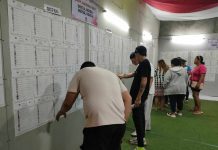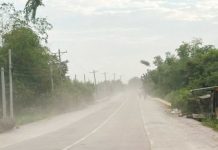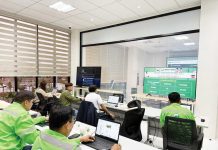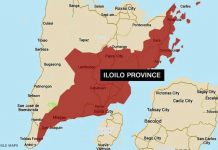[av_one_full first min_height=” vertical_alignment=” space=” custom_margin=” margin=’0px’ padding=’0px’ border=” border_color=” radius=’0px’ background_color=” src=” background_position=’top left’ background_repeat=’no-repeat’ animation=”]
[av_heading heading=’Can bangus from Tigbauan feed the world?’ tag=’h3′ style=’blockquote modern-quote’ size=” subheading_active=’subheading_below’ subheading_size=’15’ padding=’10’ color=” custom_font=” av-medium-font-size-title=” av-small-font-size-title=” av-mini-font-size-title=” av-medium-font-size=” av-small-font-size=” av-mini-font-size=” admin_preview_bg=”][/av_heading]
[av_textblock size=” font_color=” color=” av-medium-font-size=” av-small-font-size=” av-mini-font-size=” admin_preview_bg=”]
ILOILO – Feeding more than nine billion people by 2050 is one of the world’s greatest challenges, according to the United Nations (UN).
At the Southeast Asian Fisheries Development Center (SEAFDEC) – Aquaculture Department (AQD) in Tigbauan town, scientists are intensifying aquaculture production activities to help meet the challenge.
To provide milkfish ponds the best quality milkfish fry, hundreds of milkfish breeders, locally known as sabalo, are being raised at SEAFDEC-AQD which has become an alternative source of milkfish fry.
Today, there are over 200 sabalos at the SEAFDEC-AQD’s Tigbauan main station in Barangay Buyu-an – with 12 kilos being the heaviest and 30 years old being the oldest.
The sabalos are a result of AQD’s research and development on milkfish spanning over 40 years, including the groundbreaking completion of the milkfish life cycle in captivity back in 1983.
Today, SEAFDEC-AQD’s hatcheries produce an average of 60 million milkfish eggs per spawning season.
Fry from AQD were tested to be of the best quality, eliminating the risk of deformations which is the usual issue with milkfish fry from the wild.
PRODUCE MORE FISH
The world’s increasing population exacerbates environmental degradation, resulting to the depletion of natural resources and eventually decreasing food production. It is in this context that the international community has called on the aquaculture sector to make an unprecedented commitment to produce fish.
The UN 2030 Agenda aims to meeting the ever-growing demand for fish as food. But it noted that “the aquaculture sector’s contribution to the supply of fish for human consumption is immensely challenging.”
Due to economic and financial uncertainties the world over, and growing competition for natural resources, food production remains to be a problem.
Capture fishery production has been relatively static since the late 1980s and are expected to remain fairly stable. This means future increase in world fish supply will be heavily dependent on aquaculture.
UN’s Food and Agriculture Organization reported that marine capture fisheries resources are close to full exploitation worldwide with about half of them fully exploited. The rest are either over exploited, depleted or recovering from depletion, or with insignificant capacity to produce.
The inland capture fisheries resources are likely to be as serious or worse, considering its much larger environmental influence.
Aquatic food production has transitioned from being primarily based on capture of wild fish to culture of increasing numbers of farmed species. A milestone was reached in 2014 when the aquaculture sector’s contribution to the supply of fish for human consumption overtook that of wild-caught fish.
The trend of aquaculture production is increasing, providing seven percent in 1974, increased to 26 percent in 1994 and 39 percent in 2004.
Asia has played a major role in this growth as it represents more than 60 percent of world aquaculture production.
World fish production is projected to increase by 1.4 percent per year between now and 2024 as reported by FAO.
SEAFDEC-AQD is mandated to conduct scientific research to generate aquaculture technologies appropriate for Southeast Asia. (With a report from SEAFDEC-AQD/PN)
[/av_textblock]
[/av_one_full]







